Protecting Tenerife's Marine Marvels
Air Date: Week of May 23, 2025
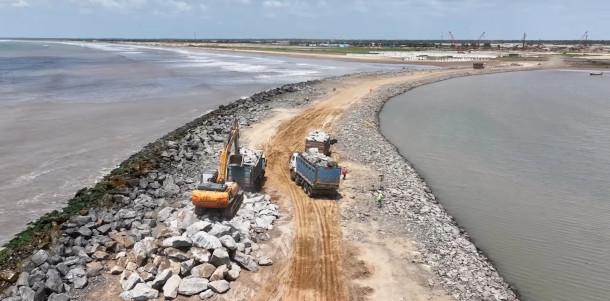
Port construction can have major environmental impacts on the ocean such as damaging the seabed and creating coastal runoff. (Photo: Megha Engineering and Infrastructures Ltd, Wikimedia Commons, Public Domain)
One of the recipients of this year’s Goldman Environmental Prize is helping to protect an especially biodiverse part of the oceans around the Canary Islands. Carlos Mallo Molina was previously a civil engineer who also loved scuba diving. When he found out about plans to build a massive port on the island of Tenerife that could have devastated the local marine life, he decided to leave construction and dedicate his career to protecting the oceans. He joined Living on Earth Executive Producer Steve Curwood.
Transcript
O’NEILL: It’s Living on Earth, I’m Aynsley O’Neill.
DOERING: And I’m Jenni Doering.
Our oceans play a crucial role in sustaining life on Earth. According to the National Oceanic and Atmospheric Administration the oceans absorb up to 30% of annual carbon dioxide emissions, which makes them the world’s largest carbon sink. They’re also rich in biodiversity that supports ecosystems and economies across the globe. And one of the recipients of this year’s Goldman Environmental Prize is helping to protect an especially biodiverse part of the oceans around the Canary Islands, a Spanish archipelago just off the coast of Morocco. Carlos Mallo Molina was previously a civil engineer who also loved scuba diving. When he found out about plans to build a massive port on the island of Tenerife that could have devastated the local marine life, he decided to leave construction and dedicate his career to protecting the oceans. He spoke with Living on Earth Executive Producer Steve Curwood.
CURWOOD: So let's begin by having you describe the marine protected area in the Canary Islands that's of so much concern.
MOLINA: So, yeah, the Canary Islands are our Spanish Hawaii, so you can imagine, and Tenerife is the biggest island of the eight, and in the southwest of the island, there is this marine protected area that is called the Zona Especial Conservación Teno-Rasca, which means a special protecting zone, which is an MPA or a marine protected area. And why is protected is because there is so much life. We have population of whales all year round. We have sharks. We have like a giant squid. We have like invertebrate sea turtles. It's just a hot spot of biodiversity in Tenerife.
CURWOOD: And how big is the marine protected area, by the way?
MOLINA: So it's 170,000 acres, or 70,000 hectares, which is roughly 60 kilometers by 8 kilometers, more or less.
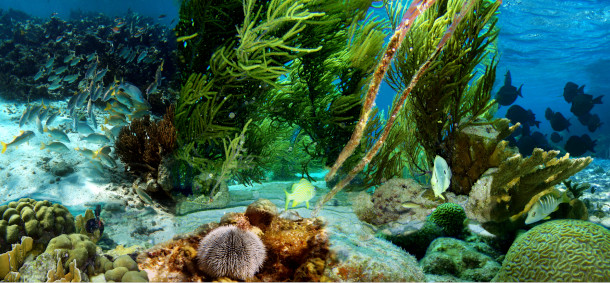
The ocean is home to beauty, but also a multitude of marine animals and species and is the biggest carbon sink. (Photo: Michal Strzelecki, Wojtek Strzelecki & Jerzy Strzelecki, Wikimedia Commons, Public Domain)
CURWOOD: Just describe Fonsalía for me right now.
MOLINA: So Fonsalía is a port that was going to be hosting 470, recreational boats, big ferries, cruises, just a lot of ships. The shape of the port was going to be a mega port with an island port. So basically it's rounded. It's a very different shape of port that has a lot of impact underwater seabed. And basically it was going to be the connection with the, what we call in the Canary Islands, is the green islands. So it's the La Gomera, La Palma and El Hierro. So, yeah, that's, that's pretty much. What is it.
CURWOOD: So going from constructing a road to the port to being a Marine conservationist is a bit of a leap. Tell me about the day that you said, Well, wait a second, I've got to change what I'm doing.
MOLINA: Yeah. So I think working in Tenerife as an engineer and like understanding the impact that engineers can do with construction, and being aware that sometimes as an engineer, we try to do environmental assessment, but when it comes to the reality, the assessment is far away from the impact that we are actually doing. It opened my eyes to think that the construction should change, and it was when I realized all the impact that I could change by changing my life and doing something meaningful for the environment. I just decided to jump into the marine conservation field.
CURWOOD: And so you created the non-governmental organization, Innoceana in part to combat this infrastructure development. Tell me, how did the establishment of your group help support the fight against the port?
MOLINA: In 2018, 2019 the government started talking about Fonsalía like, hey, we are going to start thinking about building this port finally, because this port is from the last century. So the planification of the port started in at the end of the 20th century. So when all of this started again to be a reality, we just put the effort of the organization in supporting this citizen platform called Salvar Fonsalía. And in this platform there were amazing people, from biologists to lawyers, and I was the engineer. So I was the civil engineer who used to be on the other side of development, and I changed into this side, so that, I think that key role was important to convince the authorities that it's not just about biologists trying to save the whales. Also, there is engineers and there is other people that want to do something good for this place.
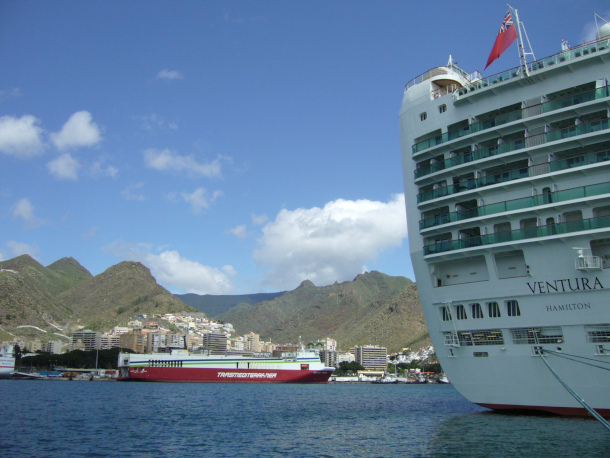
Ships can be a major disturbance for whales and other sea creatures, causing stress. (Photo: al_green, Flickr CC BY-NC-ND 2.0)
CURWOOD: Let's just think about it. I'm at the surface, building a port, rebuilding a port that was fairly old, would seem like a smart move for boosting the local economy there on Tenerife. To what extent was there pushback from those in favor of the port?
MOLINA: Yeah, one of the biggest barriers was my own engineering group. So I'm part of the charter civil engineers of the Canary Islands. So my own, let's say family of engineers, were the most interested in building this port, because, you know, construction companies will make this happen. And they were very interested on having this, this development going on, right? So that was a big pushback. They tried to make this port from the very beginning, and I spent so much time speaking to them, speaking to my my colleagues, and trying to convince them that was not necessary. One of the things that we use to convince a lot of people is when this port was planned many years ago, like over almost 30 years ago, there was no knowledge about how important was this marine protected area we were speaking about. So, having all of this information, this new information, was key, and also having Europe on our side, because the European Union is very interested in protecting the nature, which is something I'm proud of. That was all of that combination of things was very important.
CURWOOD: What's been the quality of that biological diversity over the years? How much has it declined?
MOLINA: So there is different ecosystems and different like animals living there. So for instance, when you speak about the seagrass, the seagrass is these plants that live under the ocean and they produce a lot of oxygen and sequestrate carbon. They are carbon sinks. We lost, according to our own studies with my organization, we lost at least like 60% of them in the last 20 years, according with the data from the past. But when it comes to the whales, the population of whales is still there. It hasn't been declined, but the level of cortisol, the level of stress, is just increasing because all of the tourism and all the pollution and, you know, all of the all of the stressors. So yeah, there is definitely getting worse and worse.
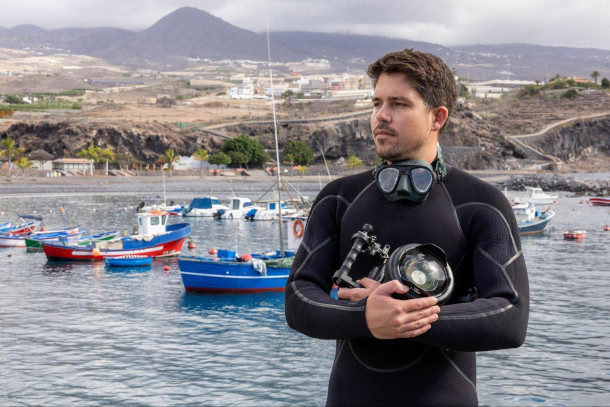
Carlos loves the ocean and is the happiest when scuba diving. (Photo: Goldman Environmental Prize)
CURWOOD: So talk to me about what would have happened to nature with the construction of this port, what was wanting to be done?
MOLINA: Yeah. So first of all, there is, like, different levels of in the construction a port. First you have the actual construction, and then you have the kind of the operation of the port, right? So it's different impacts. When you are building the port, the first thing you are going to do is to destroy the seabed, so you are going to put a lot of land under the water to just create an island, basically, that is going to be the all the filling of the port. And that's so bad for basically, all of the seagrass, all of the invertebrates, all of the animals that live by the coast. But then when it comes to the operation of the port, is when you have like, 1000s and 1000s of boats and ships coming every day and moving and if you think about this, as in the middle of the marine protected area, you have this port. You can imagine all of these port ships as like arrows and like going around and like disturbing the whales, polluting and, you know, just having a lot of impact on the environment, it's like, imagine you have, like a national park where you have 1000s of cars going everywhere, not only on the road, but outside of the roads. Will be really bad.
CURWOOD: Carlos, I think it's pretty clear that you put in exhaustive hours in this campaign. So now the question that I'm sure is on everyone's mind listening to us, to what extent does this story have a happy ending?
MOLINA: Yeah, I'm so happy that you are asking me for this question, because when the government changed their mind, and they were like, Okay, we are now against the port, and all of the Fonsalía platform, like all these citizen platforms, were so happy to celebrate that the port wasn't going to happen. Myself, along with my team and other partners, we continue working on, okay, this is not the end. We need to do something more. We need to really create something in this place to really have a happy ending. And this is where we started asking to Europe for funding to create a marine conservation and education center in the area where the port was going to be built. And two years ago, we got the announcement that Europe gave us the fundings. And this project is called Hope, and for many reasons, but of course, it's because it's bringing hope to this area, and it's very focused on working with the communities and being able to teach the communities about how important is this marine protected area that is connected to all of the Macaronesia. So now we are building this Marine Conservation Center, and I'm hoping that this is the real way to finish with the problem, a root problem of development and gentrification that is happening in the Canary Islands.
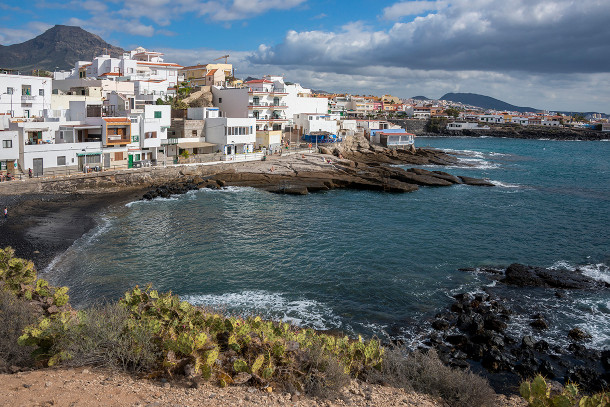
Tenerife is the biggest of Spain’s Canary Islands, hosting more than 5 million tourists a year. (Photo: Salvador Aznar)
CURWOOD: Anything more you want to tell us?
MOLINA: Yeah, hope is a very beautiful project, also because it's opening to Africa. So we have partners in Senegal, Ghana, São Tomé and Príncipe and in Cape Verde, and along with Portugal, so we are actually partnering this marine conservation center is in a network of other countries, and because there is so much work to do in conservation across the Macaronesia that is all of this region. So it brings a lot of hope to think about this.
CURWOOD: Of course, Tenerife is a vacation hotspot. So to what extent now does this area attract tourists in a sustainable way?
MOLINA: To be honest, we are very far from that. It's unfortunately, there is a lot of things to change in the Canary Islands, and especially in Tenerife, to change the way how tourism is dealing with the island every year only in Tenerife, that is an island of only like from side to side, is 120 kilometers. So it's not a big island. We have 6 million people visiting every year, which is a lot of people, most of them coming from not from Spain, but from Europe, from especially from England. And the problem is that there is we have promoted a lot of this cheap tourism when people are just coming to be in a hotel with the bracelet and they have everything inclusive, and they don't really engage with the communities, they don't learn about the culture. And this is a very big problem that is reflected in all of these hotels. In like, there is this place called Loro Parque that has orcas as an attractive for the tourists, and they are like living in a little aquarium, or there is a lot of golf course in places that are desert, that are using a lot of resources of the island that are necessary for the future. So, yeah, it's a it's definitely far from where it needs to be, but I can see that there is some changes going on, like the Fonsalía is one, a good example of it.
CURWOOD: What's your happiest moment these days now, when you come down to this area that was going to be a port and now is this conservation site that you call Hope, Esperanza. What do you think of most?
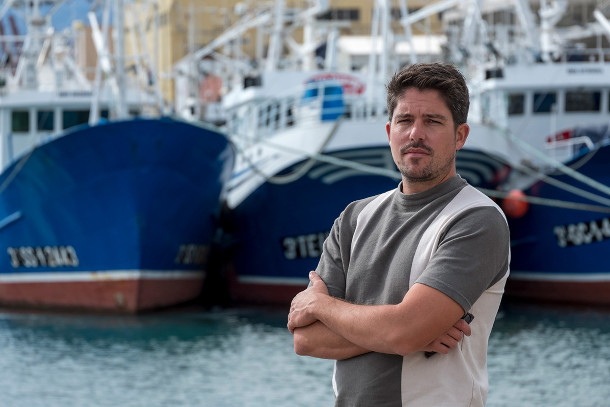
Carlos adjusted his career path by switching from civil engineer to a marine conservationist. (Photo: Goldman Environmental Prize)
MOLINA: You know, for me, the happiest moment for me is when I am under the water, so when I'm scuba diving, because that's my passion, and just being in the area where the port was going to be built, and being scuba diving there, and just thinking about it, it's just, it makes me break in tears every time I'm underwater. Under my mask, I am almost crying because it's so beautiful and it's so pristine and so amazing, that thinking that the humans can really make a good change for the environment and for the future is just it brings me a lot of happiness and hope.
CURWOOD: So what's next for you?
MOLINA: Yeah, well, I think I keep telling myself what is next is to not to give up in this world, because it's very hard, like at least three times a year I am about to give up, saying this is impossible, but I always keep going. So I think using this opportunity of the Goldman prize to go to the next level and be able to maybe start, I like to see that in the future, we are going to start projects in Africa and working with other countries and and use this model in the Canary Islands as standard that we can replicate in other places and and like create a ripple effect that really makes a difference for the ocean.
DOERING: That’s Carlos Mallo Molina, 2025 Goldman Prize recipient for Islands and Island Nations, speaking with Living on Earth’s Steve Curwood.
Links
Learn more about Innoceana and the work they’re doing
Living on Earth wants to hear from you!
Living on Earth
62 Calef Highway, Suite 212
Lee, NH 03861
Telephone: 617-287-4121
E-mail: comments@loe.org
Newsletter [Click here]
Donate to Living on Earth!
Living on Earth is an independent media program and relies entirely on contributions from listeners and institutions supporting public service. Please donate now to preserve an independent environmental voice.
NewsletterLiving on Earth offers a weekly delivery of the show's rundown to your mailbox. Sign up for our newsletter today!
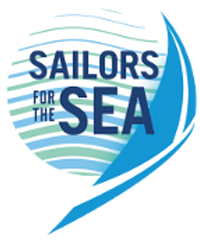 Sailors For The Sea: Be the change you want to sea.
Sailors For The Sea: Be the change you want to sea.
 The Grantham Foundation for the Protection of the Environment: Committed to protecting and improving the health of the global environment.
The Grantham Foundation for the Protection of the Environment: Committed to protecting and improving the health of the global environment.
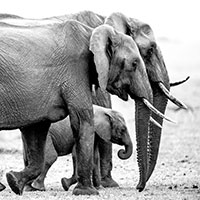 Contribute to Living on Earth and receive, as our gift to you, an archival print of one of Mark Seth Lender's extraordinary wildlife photographs. Follow the link to see Mark's current collection of photographs.
Contribute to Living on Earth and receive, as our gift to you, an archival print of one of Mark Seth Lender's extraordinary wildlife photographs. Follow the link to see Mark's current collection of photographs.
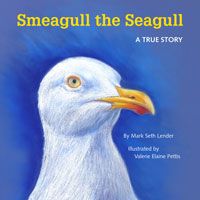 Buy a signed copy of Mark Seth Lender's book Smeagull the Seagull & support Living on Earth
Buy a signed copy of Mark Seth Lender's book Smeagull the Seagull & support Living on Earth

